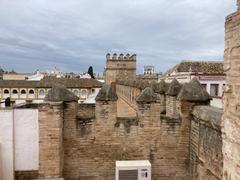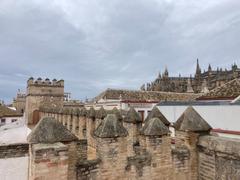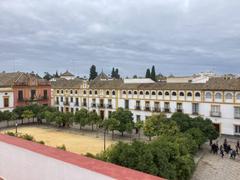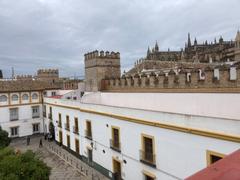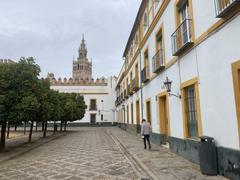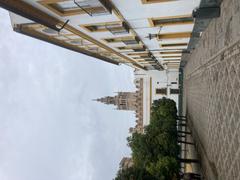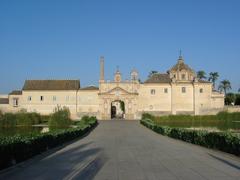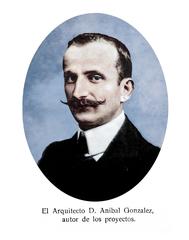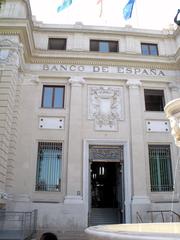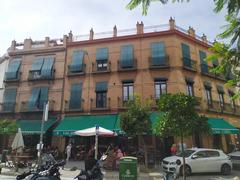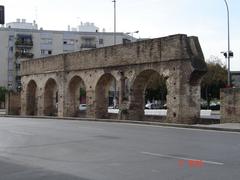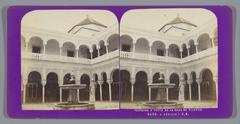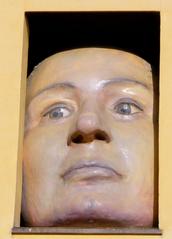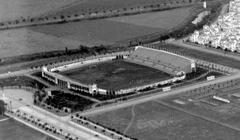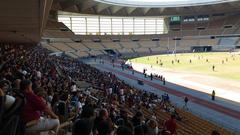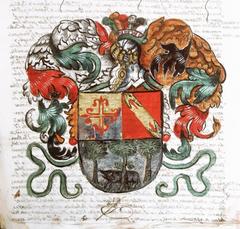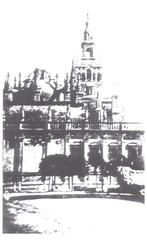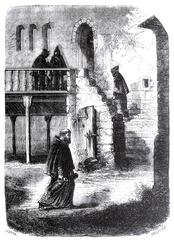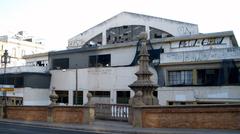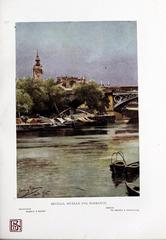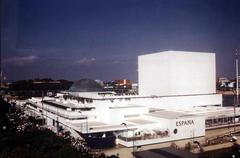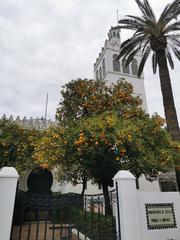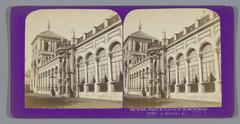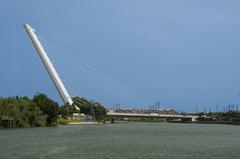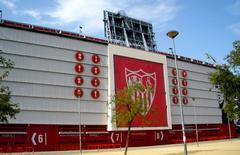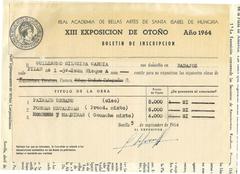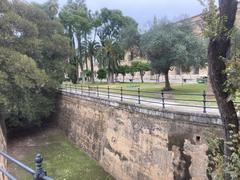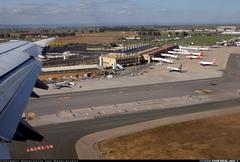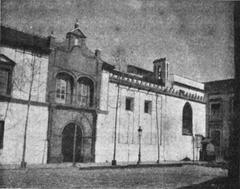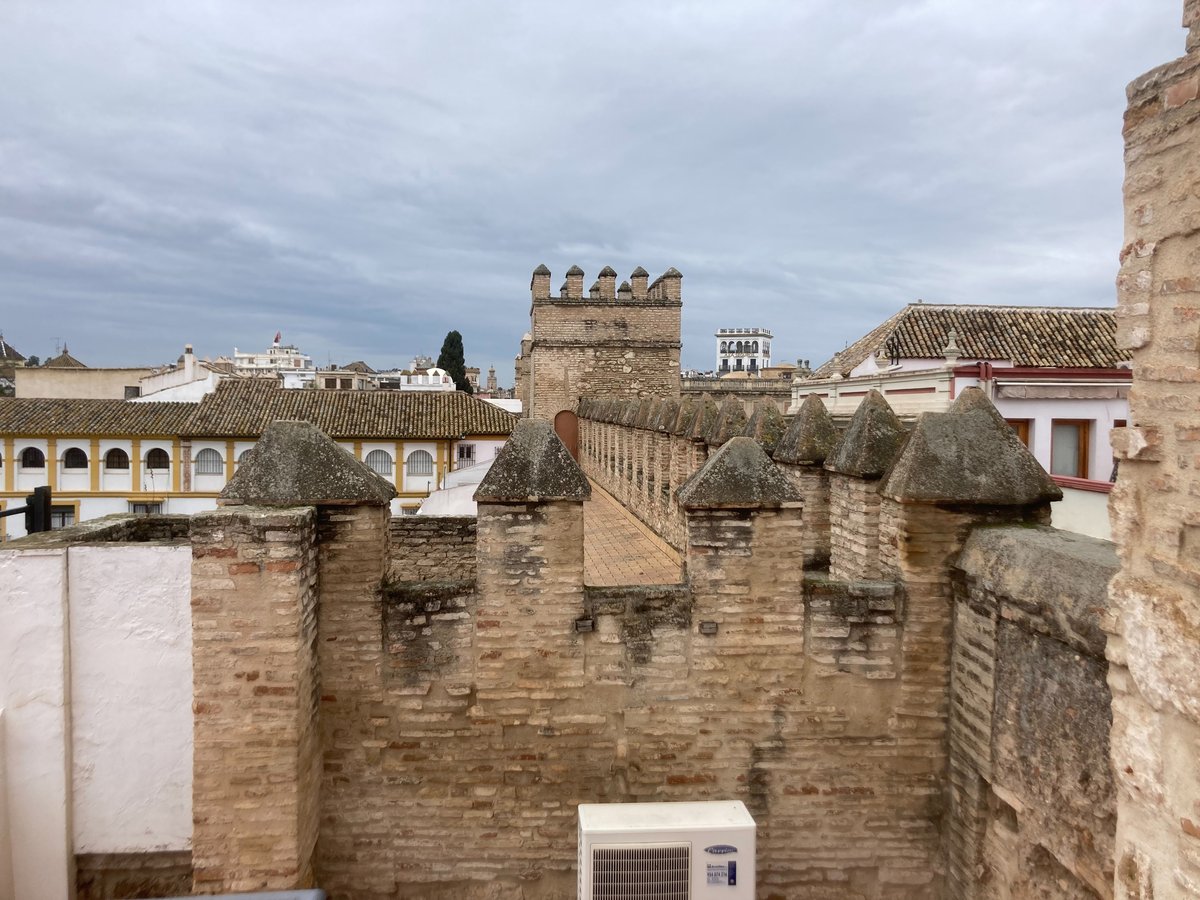
Comprehensive Guide to Seville’s Patio de Banderas: Visiting Hours and Tickets
Date: 19/07/2024
Introduction
The Patio de Banderas, or ‘Courtyard of Flags,’ is a mesmerizing plaza located in the heart of Seville, Spain. This historical site offers visitors an exceptional glimpse into the city’s rich architectural and cultural heritage. Nestled within the iconic Alcázar of Seville, the Patio de Banderas has witnessed centuries of history, from its origins as a Moorish palace courtyard to its prominence during the Spanish Empire’s Golden Age. Today, it stands as an enduring symbol of Seville’s multicultural past, drawing tourists from around the globe to explore its captivating beauty. Whether you’re a history enthusiast or a casual traveler, the Patio de Banderas promises an unforgettable experience, blending the splendor of Mudéjar architecture with the grandeur of Spain’s royal history. For those planning a visit, understanding the site’s historical context and practical details, such as visiting hours and ticket information, can greatly enhance the experience. (source)
Table of Contents
- Introduction
- History of Patio de Banderas
- Cultural Significance
- Visitor Information
- Travel Tips
- Nearby Attractions
- FAQ
- Conclusion
History of Patio de Banderas
From Moorish Palace to Royal Seat of Power
The story of Patio de Banderas begins in the 10th century, during the rule of the Caliphate of Córdoba. It was then that the foundations were laid for what would become the Alcázar of Seville, a magnificent Moorish palace complex. The Patio de Banderas, originally part of the palace’s service area, underwent a dramatic transformation after the Christian conquest of Seville in 1248.
King Ferdinand III of Castile, recognizing the strategic importance and beauty of the Alcázar, chose it as his royal residence. This marked a turning point for the Patio de Banderas. No longer a humble service yard, it was incorporated into the expanding palace and began its journey towards becoming the grand courtyard we see today.
The Reign of Pedro I and the Mudejar Masterpiece
The Alcázar, including the Patio de Banderas, reached its zenith during the reign of King Pedro I (1350-1369). Pedro, known for his admiration of Moorish art and architecture, commissioned extensive renovations and expansions to the palace. He employed skilled Muslim artisans, masters of the Mudéjar style, which blended Islamic and Christian artistic traditions.
The Patio de Banderas, under Pedro’s vision, was transformed into a grand courtyard reflecting the splendor of his court. The Mudéjar influence is evident in the courtyard’s graceful arches, intricate tilework (azulejos), and the serene atmosphere characteristic of Moorish design. This fusion of styles, a testament to Seville’s rich multicultural past, makes the Patio de Banderas a unique and captivating historical site.
A Symbol of Power and Prestige
Over the centuries, the Patio de Banderas served as a stage for significant events, reflecting its evolving role in the heart of Seville. During the Spanish Golden Age (16th-17th centuries), Seville became a major port for trade with the Americas. The Casa de Contratación (House of Trade), established in the Alcázar, oversaw this lucrative commerce, further enhancing the courtyard’s importance as a symbol of Spain’s growing global power.
The courtyard’s name, Patio de Banderas, is believed to have originated from this period. As ships laden with treasures from the New World arrived in Seville, their flags would be proudly displayed in the courtyard, a visual reminder of Spain’s vast empire and the wealth flowing into its coffers.
From Royal Residence to Tourist Destination
The Alcázar, including the Patio de Banderas, remained a royal residence for centuries, witnessing the reigns of numerous Spanish monarchs. However, by the 19th century, the palace was no longer used as a primary residence. This shift led to the Alcázar, including the Patio de Banderas, being opened to the public, allowing visitors to marvel at its architectural splendor and historical significance.
Today, the Patio de Banderas stands as a testament to Seville’s layered past. It’s a place where Moorish artistry blends seamlessly with Christian influences, where echoes of royal processions mingle with the whispers of history. As you stroll through the courtyard, take a moment to imagine the countless events it has witnessed – from grand celebrations to solemn pronouncements – and let the spirit of Seville’s captivating history wash over you.
Visitor Information
Visiting Hours
The Patio de Banderas is generally open to the public daily from 9:30 AM to 5:00 PM. However, hours may vary on holidays and special occasions, so it’s advisable to check the official Alcázar website for the most up-to-date information.
Tickets
Entry to the Patio de Banderas is included with admission to the Alcázar of Seville. Ticket prices range from €12.50 for general admission to €4.00 for students and seniors. It’s recommended to purchase tickets online in advance, especially during peak tourist seasons.
Travel Tips
- Wear comfortable shoes, as the courtyard and surrounding areas are best explored on foot.
- Photography is allowed, so don’t forget your camera to capture the stunning architectural details.
- Consider joining a guided tour to gain deeper insights into the history and significance of the Alcázar and Patio de Banderas.
Nearby Attractions
- Seville Cathedral: One of the largest Gothic cathedrals in the world. (source)
- La Giralda: Originally a minaret, now a bell tower offering panoramic views of the city.
- Barrio Santa Cruz: A charming neighborhood with narrow streets, colorful houses, and delightful tapas bars.
Accessibility
The Patio de Banderas is accessible to visitors with mobility issues, with ramps and pathways to accommodate wheelchairs and strollers.
FAQs
What are the visiting hours for Patio de Banderas?
- The Patio de Banderas is typically open daily from 9:30 AM to 5:00 PM. Check the official Alcázar website for holiday hours and special events.
How much are tickets for Patio de Banderas?
- Tickets for the Alcázar of Seville, which include access to Patio de Banderas, range from €12.50 for general admission to €4.00 for students and seniors. Online booking is recommended.
Are guided tours available?
- Yes, guided tours are available and provide valuable insights into the history and architecture of the Alcázar and Patio de Banderas. Check the official website for tour options and schedules.
Conclusion
The Patio de Banderas is a hidden gem in Seville, offering a window into the city’s rich and diverse history. From its origins as a Moorish palace courtyard to its role as a symbol of Spanish power, this site is a must-visit for history enthusiasts and casual travelers alike. Plan your visit today to experience the grandeur and beauty of Patio de Banderas. For more updates and travel tips, follow us on social media or download our mobile app Audiala.
